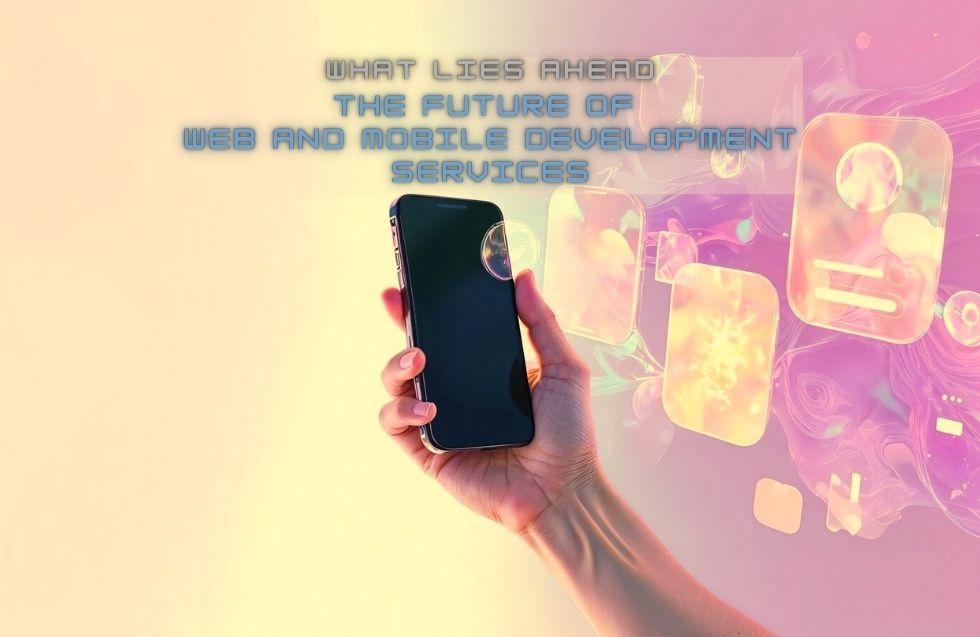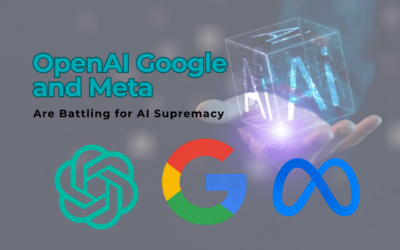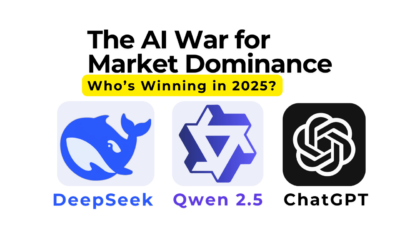The digital landscape has transformed dramatically over the past decade. The rise of mobile devices, the integration of artificial intelligence (AI), and the increasing popularity of cloud-based applications have fueled the evolution of web and mobile development. As we look to the future, development companies must adapt to emerging technologies, changing user expectations, and competitive pressures. The future of web and mobile development services will be defined by advancements in artificial intelligence, 5G, augmented reality (AR), virtual reality (VR), security, and more. This article delves into these trends, offering insight into the opportunities and challenges that lie ahead for web and mobile development companies.
1. Artificial Intelligence and Machine Learning Integration
One of the most significant trends shaping the future of web and mobile development is the integration of artificial intelligence (AI) and machine learning (ML). AI is reshaping how applications operate, from enhancing user experiences to improving the efficiency of development processes.
In 2023, AI-driven applications accounted for approximately 15% of all new app installations. This percentage is expected to rise as the demand for smarter, more personalized user experiences grows. Machine learning algorithms enable applications to analyze user data and predict behavior, personalizing content in real-time. For instance, streaming services like Netflix and Spotify use ML to recommend content based on user preferences.
Additionally, AI-based tools such as chatbots and virtual assistants are becoming standard features in web and mobile applications. By 2025, it’s projected that 95% of customer interactions will be AI-driven, as consumers increasingly demand 24/7 accessibility and immediate responses.
Key Takeaway:
AI and ML offer significant potential for creating intelligent, personalized, and responsive applications. Development companies that embrace AI-driven tools and technologies will be able to meet user expectations, streamline processes, and gain a competitive edge in the market.
2. 5G and Network Advancements
The global rollout of 5G networks is a game-changer for web and mobile development. 5G technology offers ultra-fast internet speeds, low latency, and the ability to connect more devices simultaneously. As of 2024, more than 1.2 billion devices are expected to be connected to 5G networks, enabling faster and smoother web and mobile experiences.
For developers, 5G opens new doors to innovate. For example, high-speed 5G connections make it possible to deliver real-time, immersive experiences, such as video streaming in 4K quality or AR and VR applications, without compromising on performance. Gaming and streaming services, in particular, stand to benefit greatly from 5G, as they require high data processing rates.
Additionally, as 5G becomes more accessible, the Internet of Things (IoT) will also expand. Connected devices like smart home systems, wearable technology, and smart cities rely on real-time data exchange and can benefit from enhanced 5G networks.
Key Takeaway:
5G will redefine the scope of what’s possible in web and mobile development. Companies that leverage this technology can explore new ways to deliver high-quality, real-time experiences, particularly in gaming, AR/VR, and IoT applications.
3. Augmented Reality (AR) and Virtual Reality (VR)
Augmented reality and virtual reality have evolved far beyond gaming and entertainment. Today, these technologies are integrated into web and mobile applications in various industries, including retail, education, healthcare, and real estate.
In the retail sector, for example, AR allows customers to visualize products in their environment before purchasing. This trend is becoming mainstream, as seen with IKEA’s AR app that lets users virtually “place” furniture in their homes. According to Statista, the global AR and VR market size is expected to reach $296.9 billion by 2024, which underscores the massive potential for these technologies in web and mobile applications.
For developers, AR and VR present an opportunity to design immersive, interactive experiences that enhance user engagement and satisfaction. This trend will continue to grow as technology improves and devices become more powerful.
Key Takeaway:
AR and VR are no longer niche technologies—they’re essential for companies aiming to deliver immersive and innovative user experiences. Development companies that invest in AR and VR skills and tools will be well-positioned to lead in this growing market.
4. Progressive Web Apps (PWAs) and Hybrid Apps
Progressive Web Apps (PWAs) have gained popularity as a middle ground between websites and native mobile apps. PWAs provide app-like experiences through web browsers, enabling users to access content without downloading an app. Major companies like Twitter, Starbucks, and Pinterest have adopted PWAs to improve engagement and accessibility for their users.
A 2022 study showed that companies that adopted PWAs saw an average increase of 36% in engagement and 50% faster load times. Hybrid apps, which blend elements of both native and web apps, are also gaining traction due to their flexibility and cost-effectiveness. These apps enable companies to reach a wider audience while reducing development time and costs.
As device compatibility continues to improve, PWAs and hybrid apps are expected to become even more popular, particularly among small and medium-sized enterprises that aim to deliver app-like experiences without the cost of building a native app for each platform.
Key Takeaway:
PWAs and hybrid apps offer practical, cost-effective solutions for companies seeking to enhance accessibility and reach. Development companies that specialize in these technologies can attract clients looking for versatile, scalable solutions.
5. Focus on Cybersecurity
As applications handle more personal data, cybersecurity has become a top priority for web and mobile development companies. In 2023, cyberattacks cost businesses an estimated $6 trillion worldwide, with mobile apps and websites being frequent targets.
With data breaches becoming more frequent and severe, users are demanding more transparency and security from the applications they use. This trend is forcing developers to prioritize security, incorporating measures such as multi-factor authentication, data encryption, and secure APIs into their designs. Additionally, as privacy regulations become stricter, developers must ensure compliance with standards like the GDPR in Europe and the CCPA in California.
Key Takeaway:
Cybersecurity is no longer optional. Development companies that can guarantee robust, compliant, and secure applications will be more attractive to clients who prioritize data protection and regulatory compliance.
6. Low-Code and No-Code Development Platforms
Low-code and no-code platforms are transforming the way applications are developed by enabling non-technical users to create applications through visual interfaces. These platforms allow for faster, more accessible development and reduce dependency on professional developers. According to Gartner, low-code application platforms will account for over 65% of all application development activity by 2024.
For businesses, this shift means faster time-to-market, greater flexibility, and lower costs. Development companies that adopt these platforms can streamline their processes, freeing up resources for more complex, custom projects. However, while low-code and no-code platforms are gaining popularity, there will always be demand for traditional development skills, especially for high-performance, custom applications.
Key Takeaway:
Low-code and no-code platforms offer significant time and cost savings, but companies must balance these platforms with traditional development approaches to meet varying client needs.
7. Sustainability and Green Coding
Environmental sustainability is increasingly important across industries, and the tech sector is no exception. The concept of “green coding” focuses on creating software that uses minimal resources, thus reducing its environmental impact. With IT-related emissions projected to account for 14% of global emissions by 2040, developers are encouraged to adopt practices that lower energy consumption, such as optimizing code efficiency and reducing unnecessary server use.
Development companies that prioritize sustainable practices can appeal to environmentally conscious clients, particularly those in Europe and North America, where sustainability is a major consideration.
Key Takeaway:
Green coding is an emerging trend that reflects a growing commitment to sustainability. Companies that embrace this approach can position themselves as leaders in ethical and environmentally responsible development.
8. The Rise of Blockchain and Decentralized Apps (DApps)
Blockchain technology has moved beyond cryptocurrency and is now finding applications in various sectors, including finance, supply chain, and even healthcare. Decentralized apps, or DApps, use blockchain to offer increased security, transparency, and control over data.
As of 2023, there are over 4,000 active DApps, a number that is expected to grow as blockchain becomes more mainstream. For development companies, this presents an opportunity to explore new types of applications that prioritize user autonomy and data integrity.
Key Takeaway:
Blockchain and DApps are carving a niche in the development world. Development companies that invest in blockchain expertise can attract clients interested in secure, decentralized applications.
Conclusion: A Future Full of Opportunities
The future of web and mobile development services is dynamic and filled with possibilities. From the integration of AI and the spread of 5G to the rise of AR/VR, cybersecurity, and green coding, development companies have numerous avenues for innovation. However, success will depend on staying adaptable, embracing emerging technologies, and addressing users’ evolving needs. Companies that invest in these areas will be well-positioned to lead in the competitive landscape of web and mobile development, shaping the future of digital experiences for years to come.













